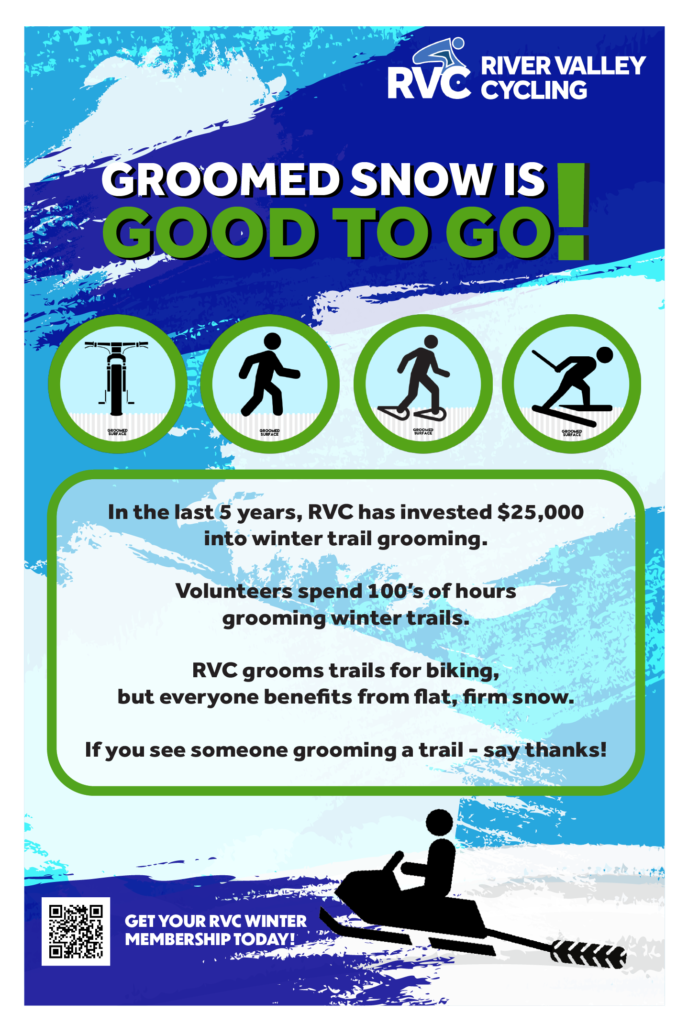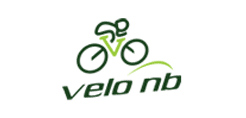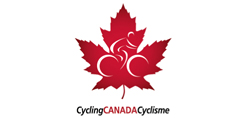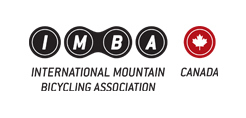Recently RVC developed and is installing a few trail signs at 2 winter singletrack networks where the club supports grooming – MVP & Woolastook. The signs went up briefly and didn’t go unnoticed. We wanted to explain our perspective on ‘Think before you sink‘… because you can’t really explore all of the important angles in a stylized sign. After hearing some initial feedback – we decided that we needed a 2-sided sign solution which is why we developed the ‘Good to go!’ sign. Groomers will decide which side to display on any given day.
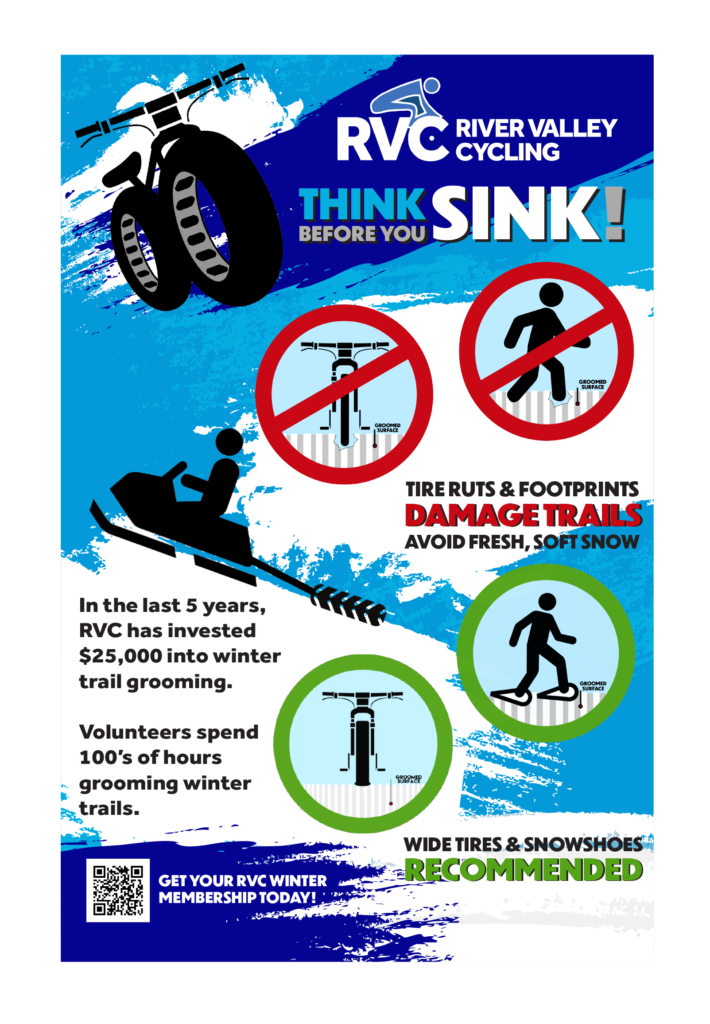
Why post anything at all?
RVC works pretty hard to keep members riding in the woods all winter long. We’re spending about $5,000 of member money each year on our Winterbike program to keep grooming machines running and the parking lots plowed. The volunteers are really the ones investing. Last week we got about 10cm of mixed sugary snow and freezing rain (barely a storm eh!) and it took about 10 person hours to prep MVP and likely the same effort over at Woolastook. Ask a groomer and they’ll tell you it’s a labour of love – but the truth is that when people volunteer this kind of time it’s nice to see that their effort is rewarded with a week of nice firm, even trails if no new snow comes down.
The issue is that a few times each year we experience a change in weather patterns – and temperatures in Jan-Feb can soar far into the positive numbers. Often this is associated with moisture which can leave groomed trails slushy or with a weak surface. In these conditions, all of that hard work is vulnerable to damage.
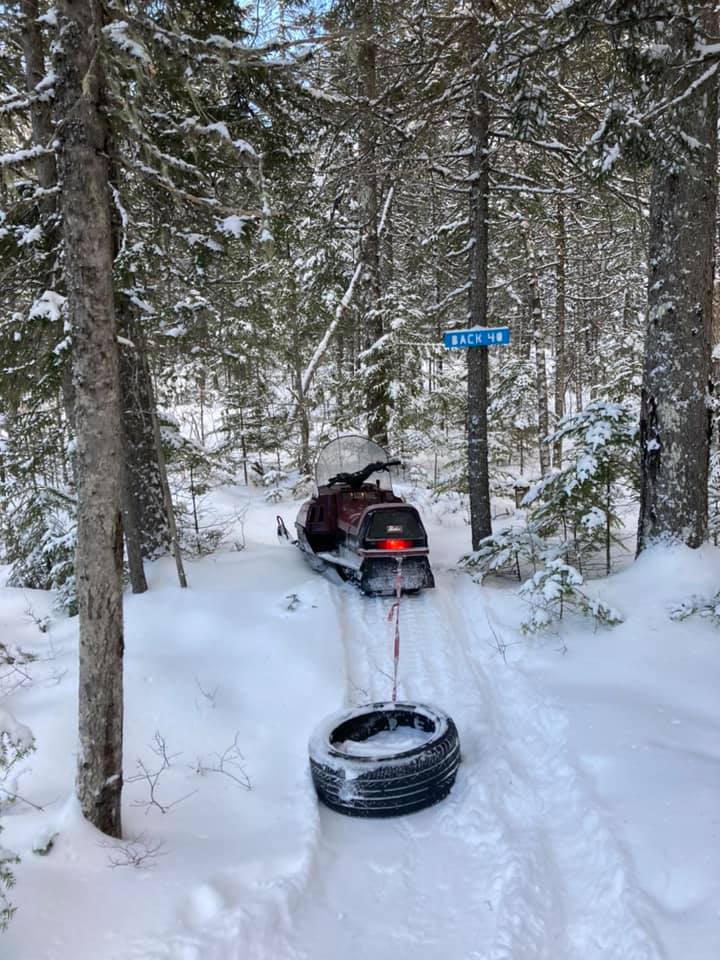
A person enjoying a walk (or a bike ride) on a warm +5° February day can leave deep boot prints (or ruts) easily in the soft snow. When the weather turns again (and it can happen fast) – these new unpleasant trail features freeze solid and can stay that way for a long time if no new snow comes. RVC runs some basic grooming tools (not a $500,000 Pisten Bully) and we’re not able to erase impressions made in icy hardpack. In sensitive soft snow there are some easy solutions: wide fat bike tires, snowshoes, and skis. Spread your mass out over a wider area and you don’t break through.
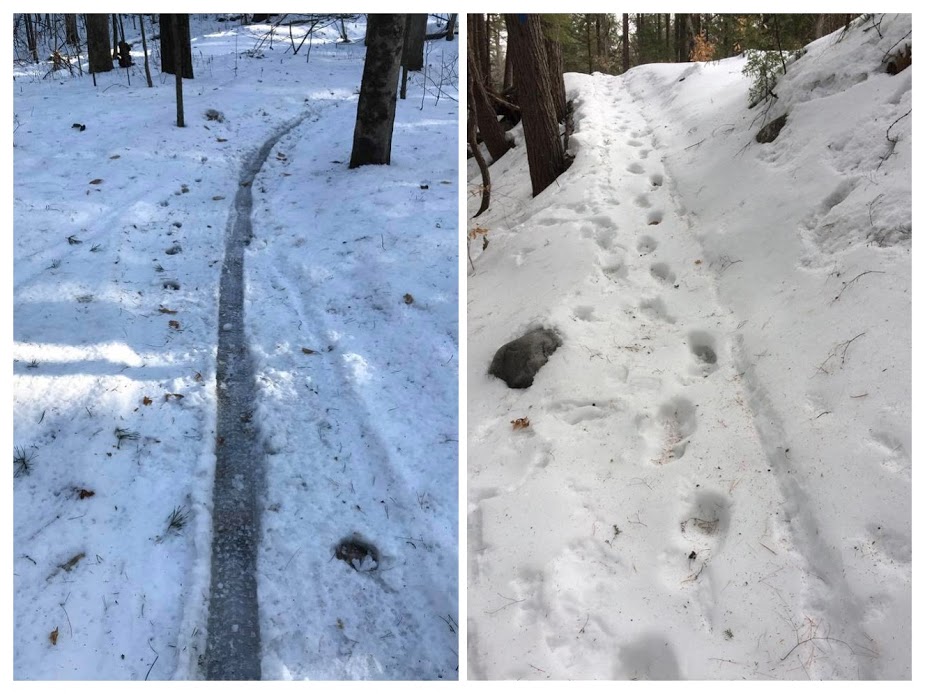
Ruts and bootprints aren’t the end of the world… we realize that this is mountain biking. However, riding a perfectly smooth snow surface is a pretty amazing treat… and it is what we’re trying to provide our members. We have also heard from many other community members how much they love using the flat, level surface created by fatbikes… so we think this is winter trail management that good for everyone.
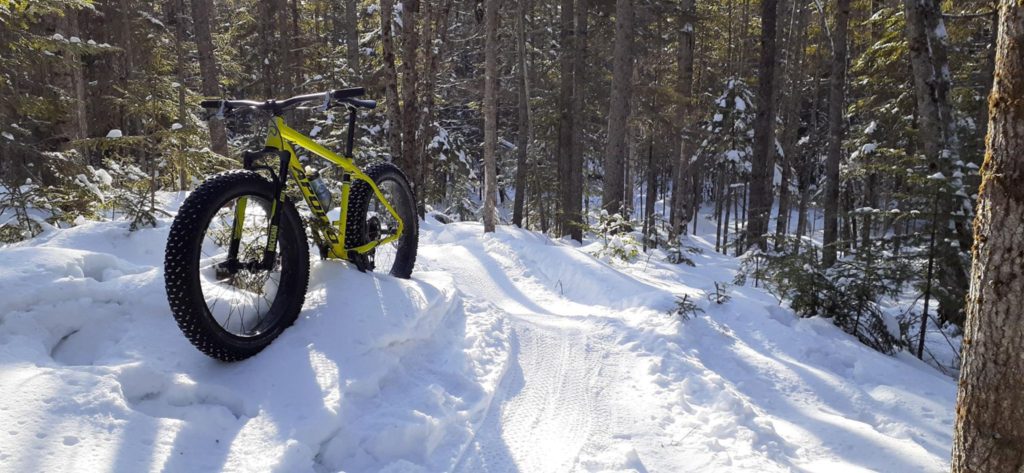
This all makes sense… so… why isn’t RVC taking a stronger stance?
RVC doesn’t own land (not a single acre) and we don’t have any land agreements that give mountain bikers exclusive use of the trails. We have to share. That person enjoying a hike on a warm sunny Saturday might just be the landowner. Remember, everywhere we ride – we are guests. Our new signs recommend snowshoes and wide tires because we are in no position to be making any demands. We have found that when we ask riders to stay off the trails in sensitive conditions you always respond – so thank you! However our reach is limited and this message never seems to go far enough so fingers crossed that the new sings help. We can educate and hope that the message is well received.
We also know that sometimes, the groomers have things so dialed-in that in cooperative weather there’s no harm done by pedestrian, trail-runner, or “skinny-bike” traffic. When the trails are bullet hard – it’s great that everyone can enjoy them. That’s why we’ve developed a ‘Good to go!’ version of the winter trail sign. These will be set up so that the groomer can make the call and flip the sign over when needed.
